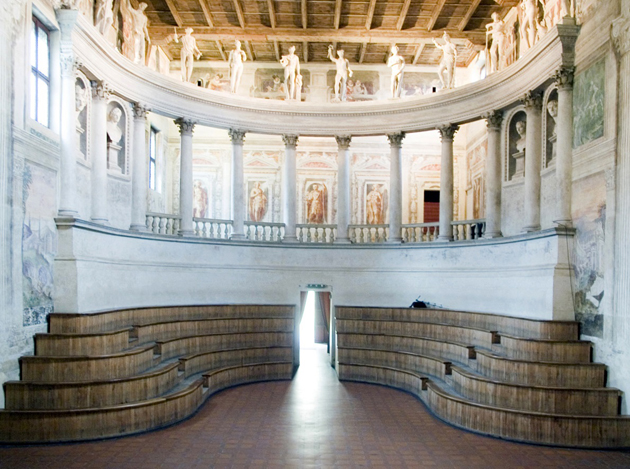
Teatro all’antica (“Theatre in the style of the ancients”) is a theatre in Sabbioneta near Mantua. A jewel of rare beauty, it was the first free-standing building designated exclusively for theatre performances. In fact, it would anticipate subsequent abandonment of open-air plays in favour of indoor performances. It is the second-oldest surviving indoor theatre in the world (after the Palladian Teatro Olimpico in Vicenza), and is, along with Teatro Farnese in Parma, one of three remaining Renaissance theatres.
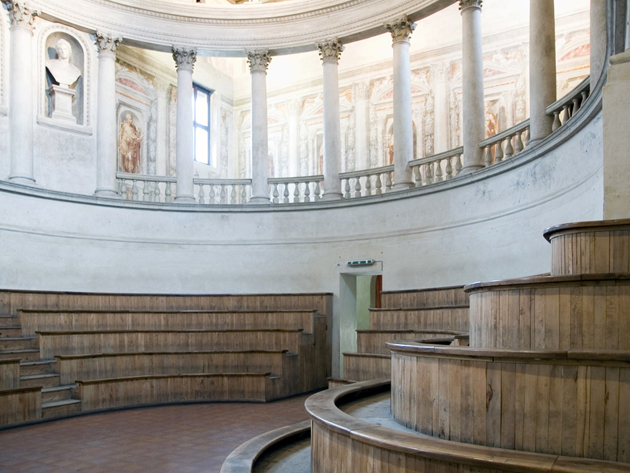
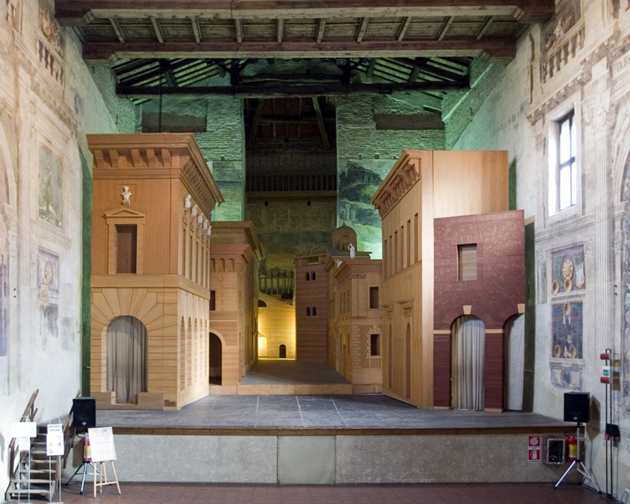
In May 1588, Duke Vespasiano Gonzaga commissioned Vincenzo Scamozzi to build a theatre in his idealized town of Sabbioneta. Even though Scamozzi’s design relies on that of his master, Palladio, it was nevertheless compromised by completely different needs in terms of space and form. While Palladio’s theatre in Vicenza is wide and shallow (almost squared), Scamozzi’s is narrow and deep (rectangular), with seating area arranged around an almost horseshoe-shaped plan. Though smaller in scale, with only five rows of seats, the theatre in Sabbioneta retains some of the original Palladian solemnity, adding, at the same time, a unique and innovative element to the structure: a back entrance reserved for the artists, with direct access to dressing rooms.
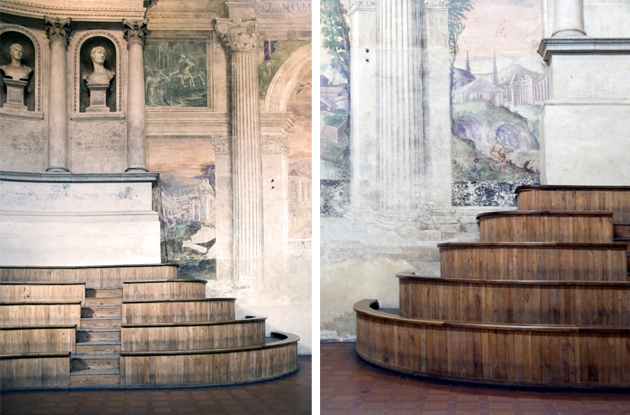
Currently, one of the remaining elements of the original theatre is the elegant and harmonious lodge consisting of a Corinthian colonnade surmounted by crown statues representing deities of the Olympus. The statues of Gods and the elegant mouldings were built by the Venetian sculptor Bernardino Quadri (school of Veronese), while the raised stage was characterized by sets designed by Scamozzi himself, destroyed in the second half of the 18th century. It represented an urban perspective, a street lined with noble and bourgeois buildings. The sense of depth was accentuated by tilting both the stage and the vaulted ceiling, made of woven river reeds, plastered and painted blue.
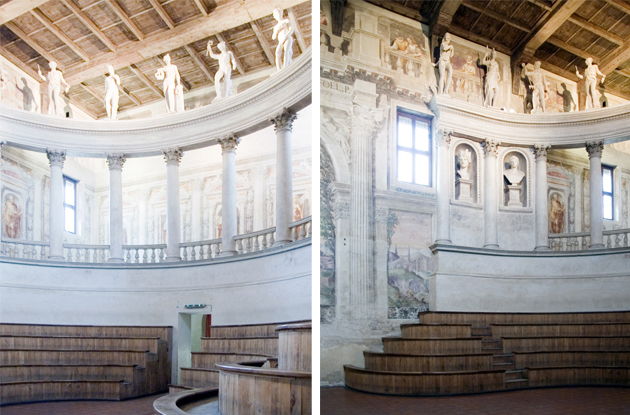
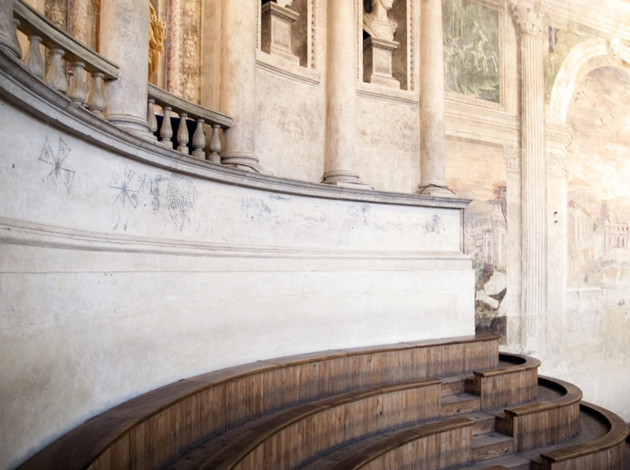
The buildings of the scene, as in Teatro Olimpico in Vicenza, were made of wood, stucco and painted canvas with faux marble and faux stone, while frescos on the side completed the scene giving the illusion of great distance. While we cannot define the structure built by Scamozzi a proscenium arch in the modern sense of the term, it nevertheless presented a very elaborate stage design. Larger than the one in Vicenza, much of the stage space in Sabbioneta is used to create the illusion of an outdoor perspective, leaving little room for actors. In fact, it proved to be too hampering, and was substituted with movable flats in later productions.
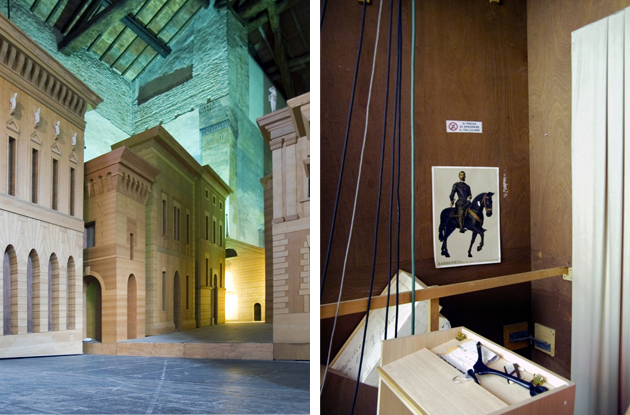
Unlike the theatre in Vicenza, surrounded by buildings on all sides, the one in Sabbioneta is almost free-standing and Scamozzi was free to design three imposing facades, severe enough in style to be defined Palladian – a plain ground floor with rusticated quoins, doorways and windows, and a piano nobile with coupled pillars and niches – a unique and precious gem of Italian Renaissance architecture.
Giulio Ghirardi
